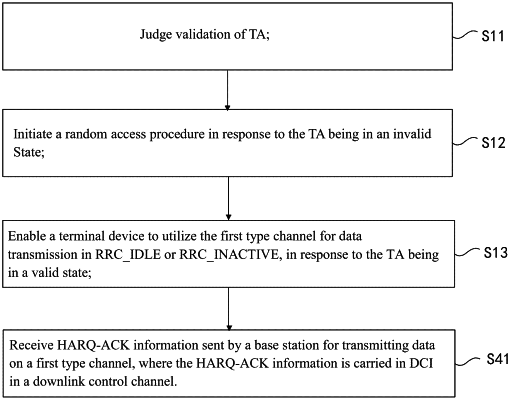| CPC H04W 56/0045 (2013.01) [H04W 74/0841 (2013.01); H04W 76/20 (2018.02)] | 10 Claims |

|
1. A transmission control method, comprising:
judging validation of Timing Advance (TA); and
initiating a random access procedure in response to the TA being in an invalid state;
wherein judging validation of TA comprises:
determining that the TA is in the invalid state in response to a determination that a specific condition is satisfied at a judgment time;
wherein determining that a specific condition is satisfied at a judgment time comprises:
determining that at least M1 judgment times in a second set of judgment times, a timer has expired; where M1 is an integer greater than or equal to 1; or
determining that a timer does not expire at a judgment time in a second set of judgment times; and determining that at least K1 times before the judgment time in the second set of judgment times, a variation of a first measurement value exceeds a threshold value; where K1 is an integer greater than or equal to 1; and
the judgment time in the second set of judgment times satisfies at least one of:
an interval from a time domain position of a resource utilized by a next first type channel being greater than or equal to a first time length; or
an interval from a time domain position of a resource utilized by a next first type channel being less than or equal to a second time length.
|